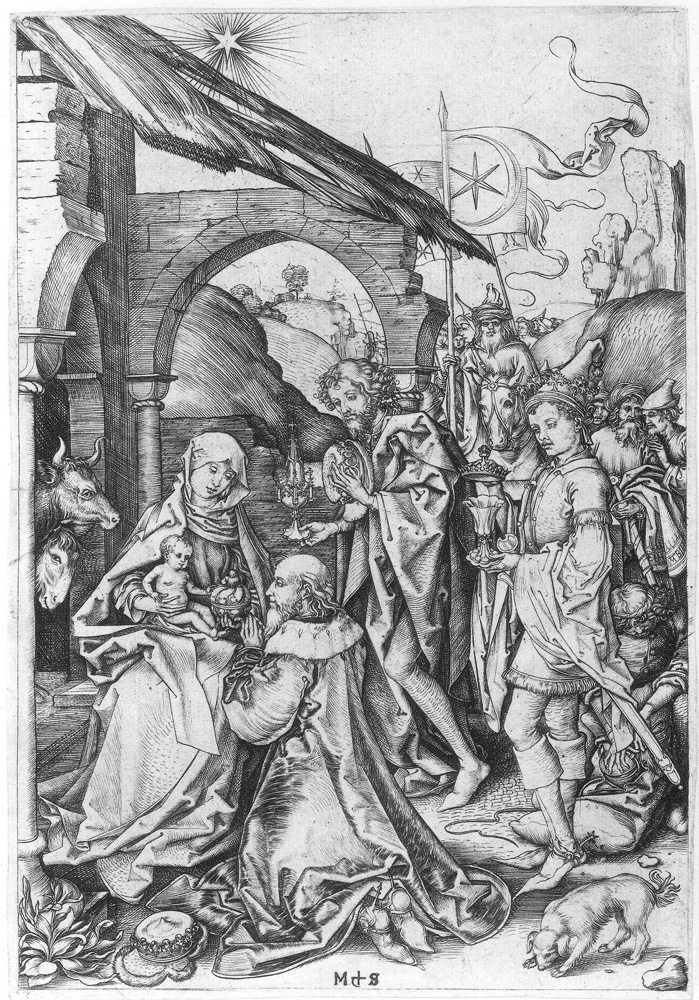Schongauer

Martin Schongauer (Colmar c. 1450 - 1491 Breisach) was one of the most outstanding and influential artists of the fifteenth century. He contributed in various ways to the development of engraving technique, achieving a new aesthetic which raised standards of printmaking to the level of traditional pictorial art for the first time. However, his printmaking technique effectively also introduced new methods of reproduction which were eagerly assimilated by his contemporaries: even artists such as Albrecht Dürer adapted and perfected his methods. But Martin Schongauer was not a revolutionary; rather, he interpreted the best contemporary techniques into pictorial form. By illustrating ordinary subjects in prints of the highest quality he created a substantial market. Schongauers engravings were highly prized and sold throughout Europe. This was partly due to his excellent production techniques which facilitated the distribution of his engravings in large quantities.
Schongauer has received considerable attention as a printmaker since the beginnings of art historical literature. Heinrich von Heinecken and Adam von Bartsch compiled catalogues raisonnes of his engravings that only required a few important additions later. In 1925 Max Lehrs published the fifth volume of his Historical and Critical Catalogue of German, Netherlandish and French Prints of the Fifteenth Century, which was in fact entirely devoted to Martin Schongauer; this reliable reference work is still highly regarded in the field. However, the inclusion of the 120 engravings of Martin Schongauer and his brother Ludwig in the German Hollstein series represents more than an exercise in compilation. In his story Die unsichtbare Sammlung, Stefan Zweig describes the effects of the turbulent years of war and inflation on print collections; the same causes have also had an impact on the continuing usefulness of Lehrs catalogue. Many of the private collections he mentions have been dissolved and their contents typically acquired by American museums. From the 1920s onwards important auction houses and print dealers have been scanning the market and buying up Schongauers engravings. Occasionally new states have been discovered, unknown to Lehrs and previously hardly considered by art historians.
The present catalogue integrates these and further new states into Lehrs schematic scheme and fully reproduces them for the first time. In addition to supplying easily comprehensible descriptions and reliable cross-references, it has been a primary objective to collect information on the current locations of the impressions, for many of Schongauers prints are still preserved in large numbers. Special attention has been paid to the over 600 surviving copies after Schongauers originals ranging from fifteenth to the nineteenth centuries, all of which have been thoroughly examined and indexed in order to help identify them in museums and libraries. The catalogue will contain illustrations of many copies that have not been reproduced. The inclusion of a detailed concordance will make the catalogue useful in its own right and also as a starting point in research for secondary information.
The catalogue on the output of Martin Schongauer is preceded by a few engravings of his brother Ludwig Schongauer, all of which exist only in single impression.
Compiler: Lothar Schmitt
Editor: Nicholas Stogdon
ISBN: 978-90-72658-40-6
314 pp.

